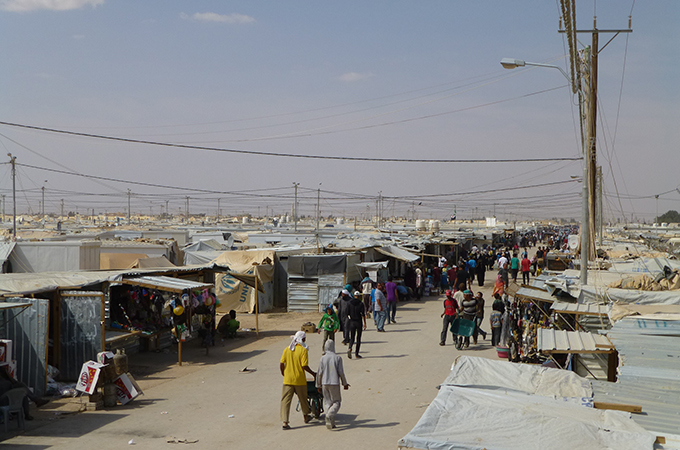By Ali Al-Bassam
Impunity Watch Managing Editor, News
AMMAN, Jordan — Al-Zaatari, Jordan, the second largest refugee camp in the world, is set to become the largest by the end of this year. The camp, already home to 500,000 refugees, receives between 2,000 – 4,000 refugees on days when the violence in Syria is especially dire, and will soon overtake the Dabaab camp near the Somali-Kenyan border as the highest-populated refugee camp in the world. According to Jordan’s Ministry of Interior, al-Zaatari as a city is the fifth largest population center in Jordan.

Jordanians, struggling to recover from the country’s recent economic collapse, are weary of the increase of refugees, and have resorted to blaming them for a shortage of water and electricity. “This is really the first time where we hear people in this country very loudly articulating views against opening our borders to receive more refugees,” said Jordanian Legislator Mustafa Hamarneh.
Jordan, concerned about the long term effects of housing so many refugees, requested the global community to provide immediate aide. “We need the UN’s assistance, and we need it immediately,” said Jordanian Minister of Interior Hussein Majali in a press conference. Majali praised the UN’s efforts thus far, but said that more is still needed to be done. “We could see two million refugees in Jordan by the end of the year,” said Majali. “The crisis is affecting Jordan on every level, healthcare, economically, education, all our sectors are being stressed.” Refugee Affairs Coordinator for Jordan’s Ministry of Interior, Saleh al-Kilani, said that the refugee crisis costs the jordanian government 2,500 Jordanian Dinars (approximately $3,500) per refugee per year, and that Jordan has already spent $826 million on the current crisis.
Syrians refugees are also voicing their resentment, as riots and protests now occur regularly within the al-Zaatari camps. Residents of the camp say that they are tired of the “wretched living conditions,” and that “they are being made to feel like prisoners.”
The al-Zaatari camp itself is comprised of tents and mobile-home caravans. The caravans create a class-based distinction between refugees who have little, and those who have less. Refugees turned al-Zaatari into their own community by establishing an unregulated marketplace. Refugees successfully converted tin stalls into shops and vendors, and created jobs within the camps, where they earn a steady income in teaching in Unicef-run schools, cleaning bathrooms, and pitching tents.
Jordan, a key ally of the U.S., is also concerned about the next state of Syria if the Assad regime falls. It is weary of what could occur if Syria becomes an extremist state. Hamarneh believes that no country in the Middle East, including Jordan, would be prepared for that outcome.
For further information, please see:
Al Jazeera — Jordan to Host ‘World’s Largest Refugee Camp’ — 16 May 2013
Catholic Online — As Death and Destruction Rain Down in Syria, Refugees Flee With Lives to Jordan — 16 May 2013
CBS News — Tensions Rise as Syrian Refugees Flood Jordan — 16 May 2013
Jordan Times — Jordan Hosting Largest Number of Registered Syrian Refugees — 16 May 2013
New York Times — Syrian Refugees Struggle at Zaatari Camp — 16 May 2013